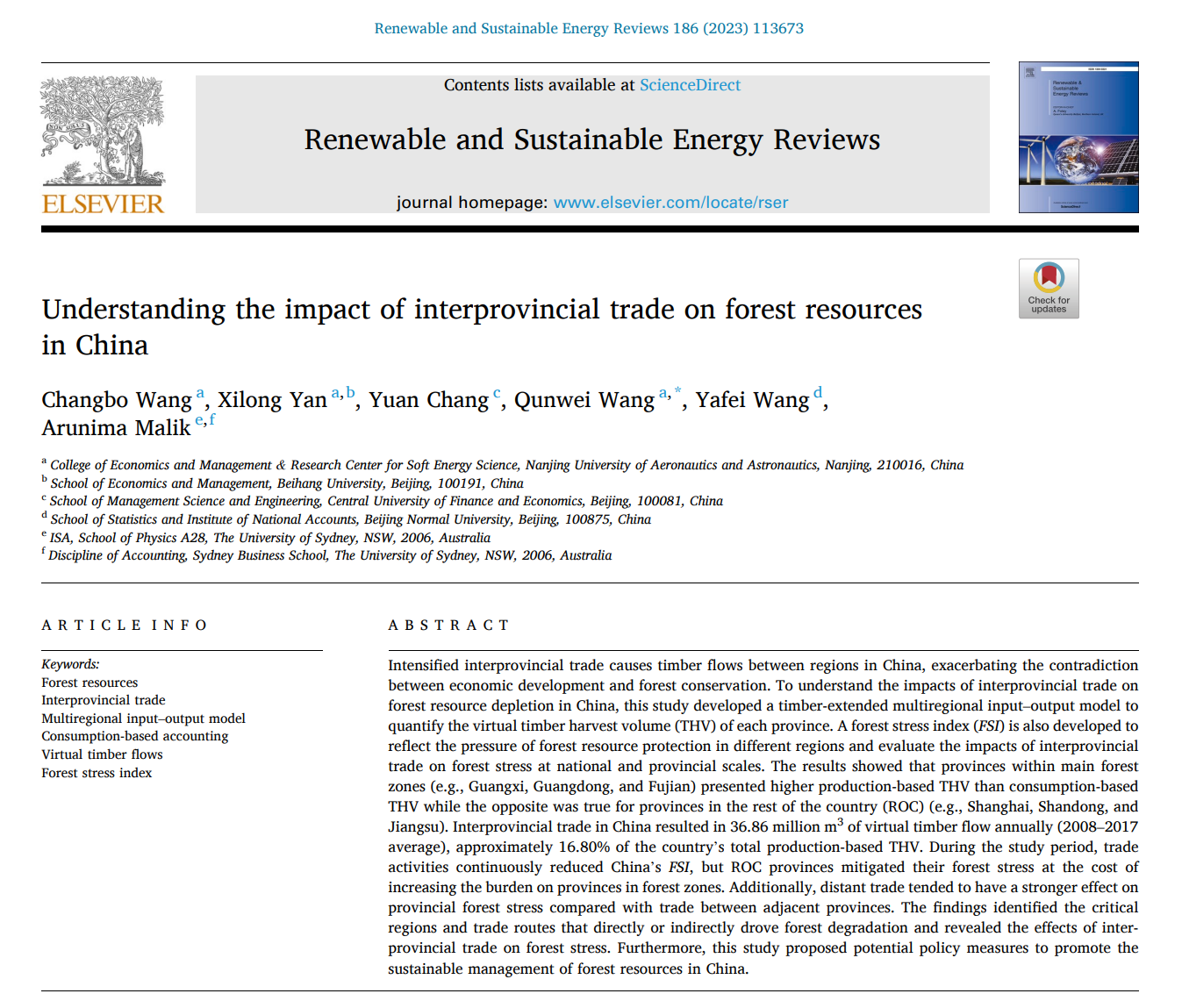
Basic Information
Title: Understanding the impact of interprovincial trade on forest resources in China
Author(s): Changbo Wang, Xilong Yan, Yuan Chang, Qunwei Wang, Yafei Wang, Arunima Malik
Journal: Renewable and Sustainable Energy Reviews
Published: 2023.10
DOI: https://doi.org/10.1016/j.rser.2023.113673
Abstract
Intensified interprovincial trade causes timber flows between regions in China, exacerbating the contradiction between economic development and forest conservation. To understand the impacts of interprovincial trade on forest resource depletion in China, this study developed a timber-extended multiregional input–output model to quantify the virtual timber harvest volume (THV) of each province. A forest stress index (FSI) is also developed to reflect the pressure of forest resource protection in different regions and evaluate the impacts of interprovincial trade on forest stress at national and provincial scales. The results showed that provinces within main forest zones (e.g., Guangxi, Guangdong, and Fujian) presented higher production-based THV than consumption-based THV while the opposite was true for provinces in the rest of the country (ROC) (e.g., Shanghai, Shandong, and Jiangsu). Interprovincial trade in China resulted in 36.86 million m3 of virtual timber flow annually (2008–2017 average), approximately 16.80% of the country's total production-based THV. During the study period, trade activities continuously reduced China's FSI, but ROC provinces mitigated their forest stress at the cost of increasing the burden on provinces in forest zones. Additionally, distant trade tended to have a stronger effect on provincial forest stress compared with trade between adjacent provinces. The findings identified the critical regions and trade routes that directly or indirectly drove forest degradation and revealed the effects of interprovincial trade on forest stress. Furthermore, this study proposed potential policy measures to promote the sustainable management of forest resources in China.